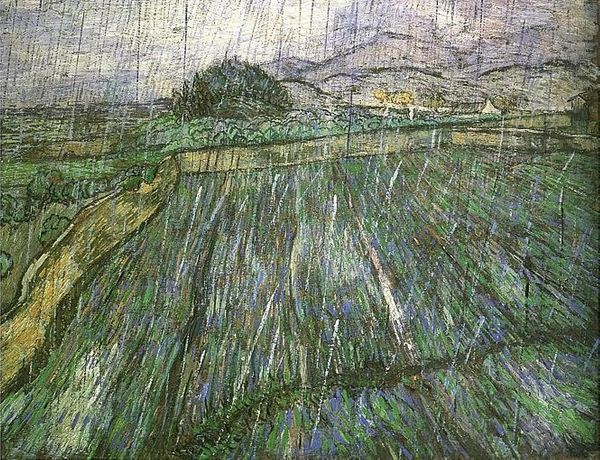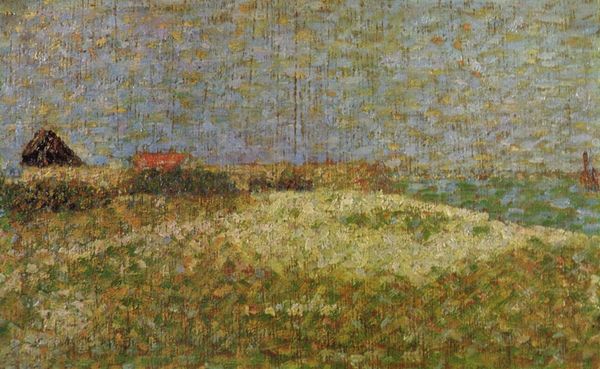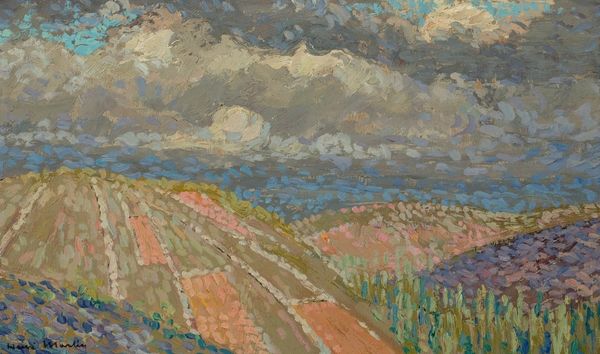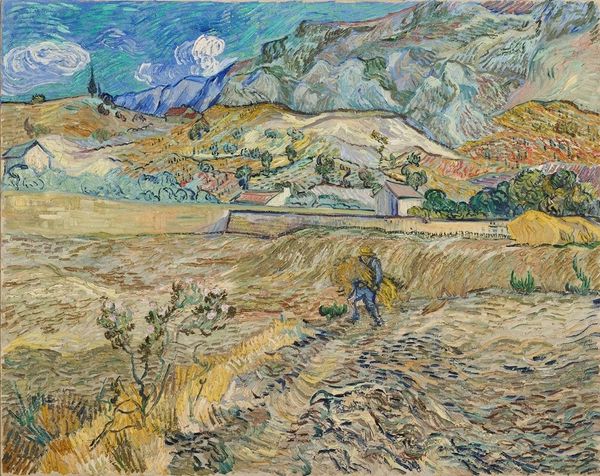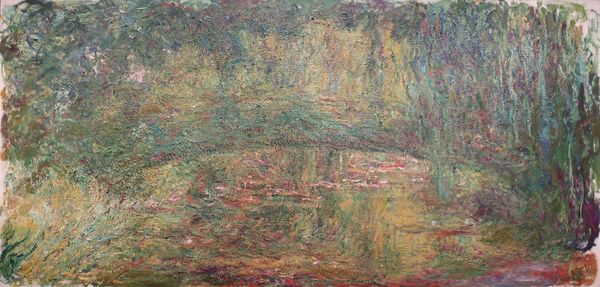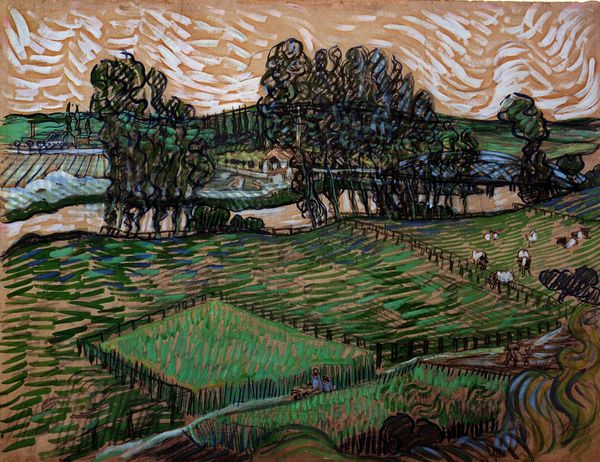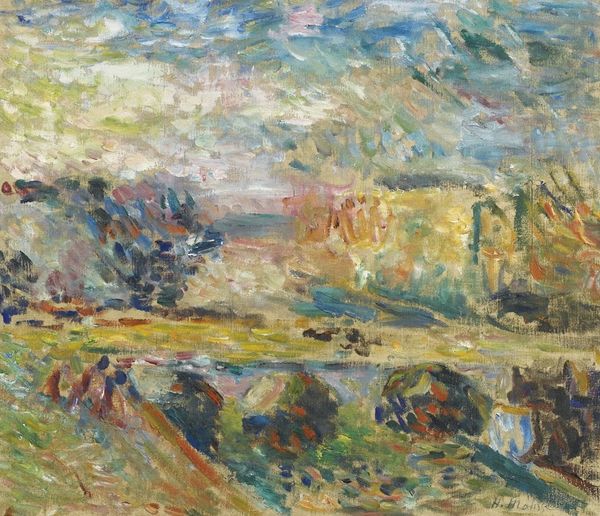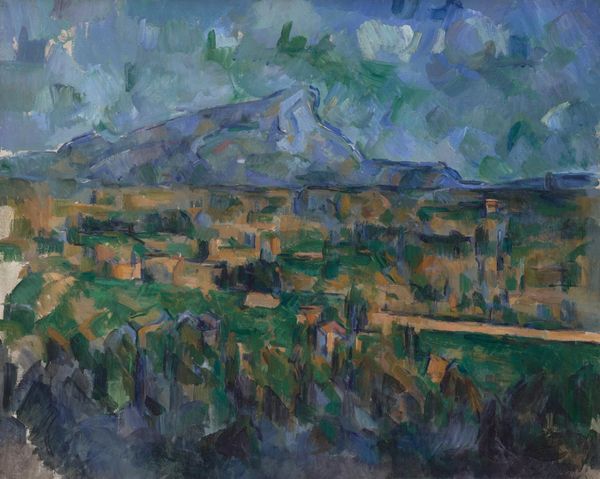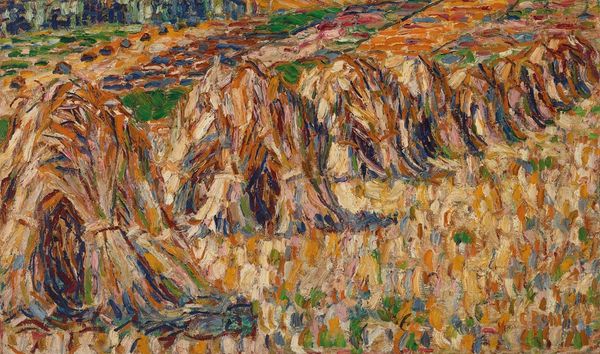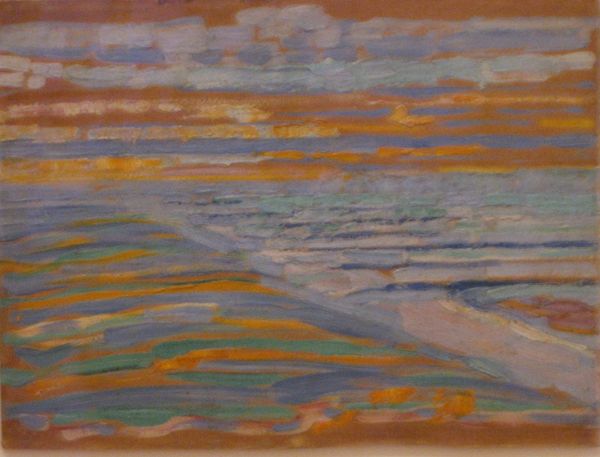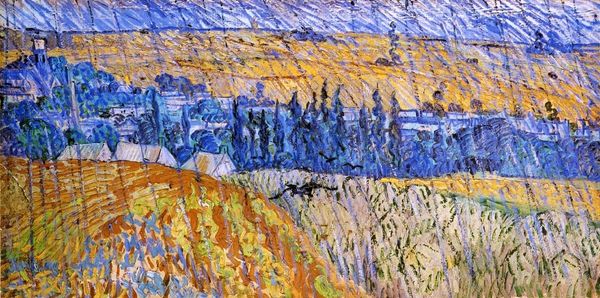
plein-air, oil-paint
#
abstract expressionism
#
impressionism
#
plein-air
#
oil-paint
#
landscape
#
figuration
#
post-impressionism
#
modernism
Copyright: Public Domain: Artvee
Editor: Here we have Van Gogh's "Rain," an oil painting rendered en plein-air. The downpour dominates, and it’s almost as though the whole world is being erased by these fierce strokes of white and grey. How do you interpret its social context and public impact, given Van Gogh's career? Curator: Considering Van Gogh's struggle for recognition during his lifetime, this piece highlights the complicated relationship between artistic expression and public acceptance. His move toward plein air was revolutionary but did not assure public reception at the time. Editor: So it’s partly the system that failed to see the value, right? Curator: Precisely. While his depictions of nature possess a certain romantic sensibility, one has to ask: Who were these images intended for, given the context of rural life at that time? Van Gogh took nature and, rather than representing it accurately, communicated how the cultural structures of art prevented that. Editor: The very thick application of paint contributes to the way viewers connect to his internal emotions. Was it a political choice for artists to use new painting methods in order to promote greater expression in visual culture? Curator: Certainly, by departing from traditional academic styles, artists asserted a new type of aesthetic judgment; viewers were meant to see that an authentic, raw individual experience could, itself, constitute an image worthy of aesthetic respect. This type of production promoted more expressive subject matter and, thus, promoted modernism more widely across cultural institutions. Editor: It’s fascinating how societal expectations shaped his artistic journey. This offers such an interesting lens through which to observe how the reception of artwork can change history. Curator: Indeed, our understanding of works is continuously shifting along with changes to art historical fields and the wider social environment. The ongoing challenge is for us, as scholars, to highlight how artists actively engaged with such changes in their day-to-day realities.
Comments
No comments
Be the first to comment and join the conversation on the ultimate creative platform.
